Sometimes it feels like the days of cheap film photography thrills are over. Then I find myself in the possession of a camera like the Pentax MZ-5 and am reminded that this really isn’t the case at all.
This website was set up just over 7 years ago now. Back then, I was having a lot of fun buying point & shoot cameras off eBay and charity shops for next to nothing and getting kicks out of their various idiosyncrasies. It doesn’t seem that long ago really, but since then the world of film photography has seen something of a boom.
Point & shoot compact cameras have really been at the centre of that boom too, with many – even some of the very poor ones – shooting up in price. You only need to spend two minutes on depop to find your jaw on the flaw. I’ve been told of cameras like the Olympus Trip MD3 listed for as much as £60, and cult classics like the mju-ii are now selling for 3x what they retailed new for 20 odd years ago. There’s still fun to be had with these cameras, sure, but the astronomical price tag has taken the edge off the enjoyment for me.
If you want cheap thrills now, you have to look toward the types of cameras that are a lot less cool. In some cases, the cameras that are almost terminally uncool. I’d say – though I might be proved wrong in due course – that a 1990s champagne-silver coloured Pentax MZ-5 probably fits that category quite well!
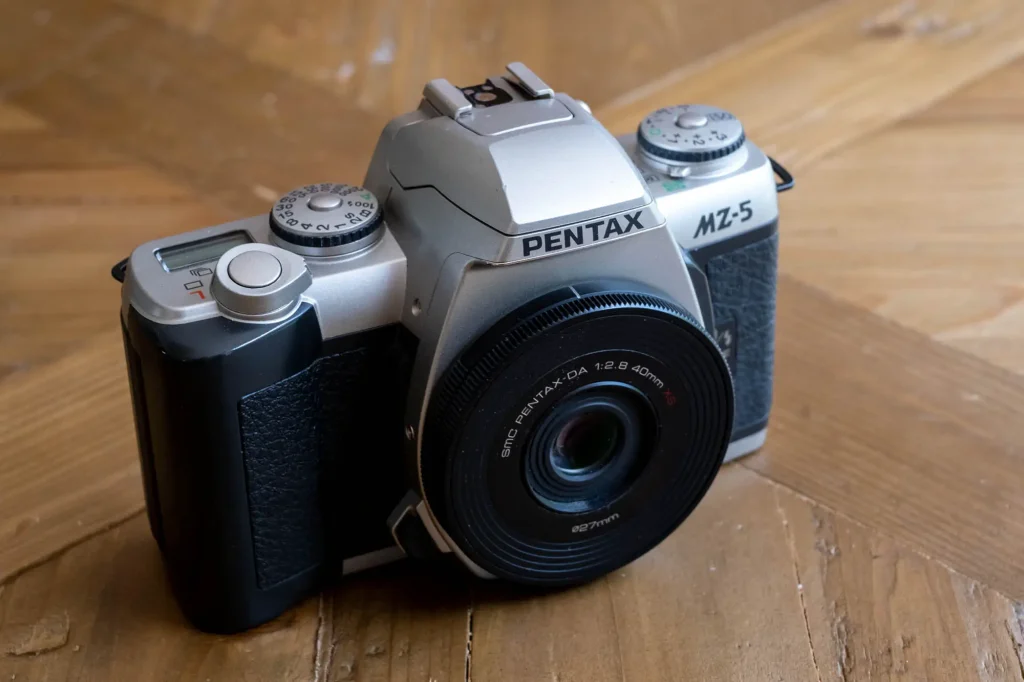
My Pentax MZ-5 experience was indeed born out of a desire to shoot a cheap camera. Not specifically for the broader cheap thrills, but more for the fun of shooting the diminutive Pentax 40mm DA XS lens on an full frame AF film camera without spending too much money. I had a desire to dip a toe into Pentax AF cameras, and after a disappointing experience with an ist* film camera, it was the next one that caught my eye. Conveniently, there was also one in my local London Camera Exchange within a day or so of me popping in and telling Gareth I was after one. He doesn’t half love to congratulate himself when he manages to pull a camera that I’m after out of thin air…
The Pentax MZ Series
The Pentax MZ-5 is one of quite a few from the MZ series of cameras (also known as the ZX series in some parts of the world). If you want to see the full range of Pentax AF cameras, you can find them on the very useful Pentax forums website here. I’ve also found this page a useful quick reference for comparing the cameras in this series.
The MZ series was apparently supposed to be something of a nod to the Pentax-M line of cameras from the 1970s/80s that includes the MX, ME, MV etc (again, a useful quick reference here). Like the earlier cameras, the MZ cameras are small, lightweight and mostly aimed at the consumer market. Of course, by the mid-90s, this translated into them being mostly made of plastic. No big deal in many ways, but having cameras from both the early M series and the later MZ series, I can tell you for free the later models (at least apart from the MZ-S) definitely don’t feel as solid. They also, at least for the most part, almost entirely lack any advanced or even specifically advantageous features (again, I’m not including the MZ-S in that statement, which really stands quite apart from the rest of the range).
This is, of course, part of the reason why these cameras sell for relatively small sums of money. But, just because they are plastic, cheap and relatively uninspiring, doesn’t for one minute mean there isn’t anything interesting about them. More specifically, it also doesn’t mean that they should be considered incapable when it comes to the task of functioning as cameras. It’s also worth pointing out that I honed in specifically on the Pentax MZ-5 as my first AF-camera-of-choice from the Pentax line for one very specific reason.
Pentax MZ-5 Shutter Speed Dial
The primary reason I wanted to try the Pentax MZ-5, at least apart from the fact that it’s small, was the shutter speed dial. Along with the MZ-5n and MZ-3 which were later upgrades on the model, and the MZ-M which was a manual focus version, my Pentax MZ-5 has a proper shutter speed dial. When I say “proper” I don’t mean to imply it’s better in my mind, but simply that it’s a real rotating dial with shutter speeds on the top.
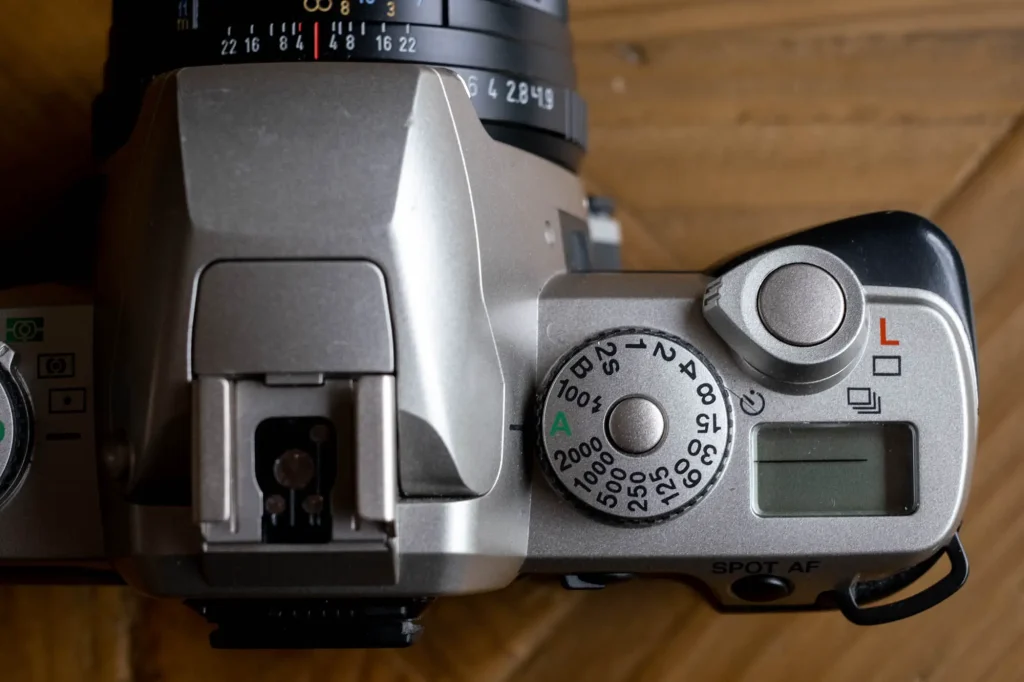
In fact, it’s quite true that these dials lack the usefulness of being able to select intermediate 1/3rd stops. But, to me they come with the advantage of a quicker sense of understanding the settings, especially when used alongside lenses with aperture dials on them.
But, what I think makes these dials more interesting is that they are also quite uncommon on autofocus SLR cameras – especially cameras from this later era. With me being an ex-Nikon-nut, two other AF SLRs that I can name off the top of my head are the Nikon F501 and F4. Both of these cameras came from the crossover period between manual and autofocus. In fact, the F501 was essentially just an autofocus version of the manual focus F301, and both of these cameras were from the mid 80s.
The Pentax MZ-5 came to market a full decade later than the Nikon F301/501, and where it had a shutter speed dial, others in the range from the same period didn’t. Instead, they relied on the then more popular PASM (or P/Av/Tv/M in the case of Pentax) program and manual modes. The dial on the MZ-5 was Pentax giving its users a choice to opt either for one method of control or the other. It would be interesting to know the sales figures for each – though I suspect the digital readout and jog dial cameras probably won out in the end.
The shutter speed dial in use
I realise I’m talking quite a lot about just the shutter dial here, but there is method to my madness as the inclusion of this dial is actually what makes and (nearly, but not quite) breaks this camera when it comes to my original ideas of using with the 40mm DA XS.
When the Pentax MZ-5 was released, all of the AF Pentax lenses of the era had an aperture control with an ‘A’ for auto setting. When used with the cameras with the shutter dial this gave access to the P/Av/Tv/M modes through how the lens and shutter dial were set, as follows:
- P – With both shutter dial and lens set to ‘A’ the camera worked in program mode.
- A/Av – Take the lens out of ‘A’, set an aperture manually but leave the shutter on ‘A’ and you’re in aperture priority mode.
- S/Tv – With the lens set to ‘A’ and a shutter speed set manually you’re in shutter priority
- M – With both set manually you’re in fully manual mode.
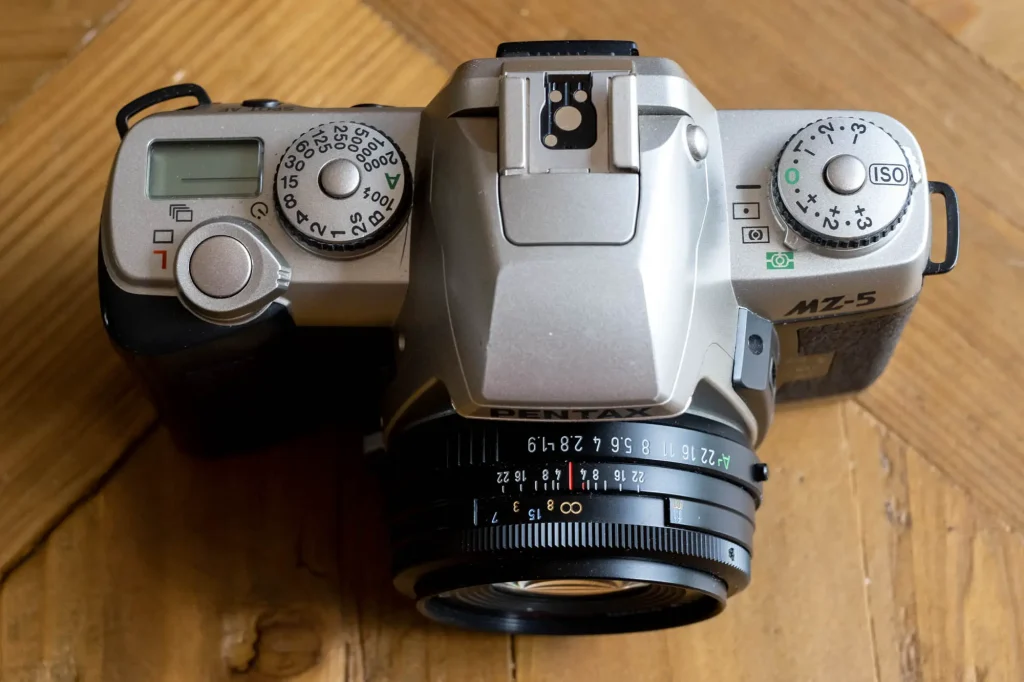
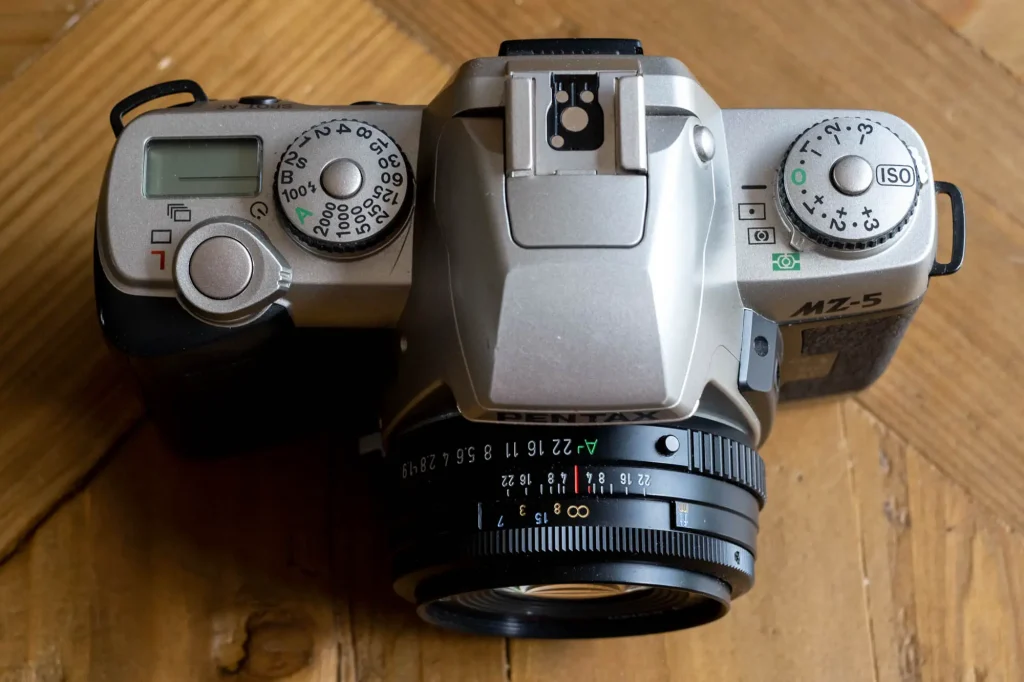
Aperture priority vs. shutter priority
This will, of course, be particularly familiar to anyone who shoots one of the modern Fuji digital cameras that work like this. But, unlike Fuji digitals – and indeed the MZ range of cameras that had button selectable P/Av/Tv/M modes – on the Pentax MZ-5 there is no way to directly control the aperture if the lens doesn’t have an aperture control. This wasn’t an issue in the days when all Pentax lenses had an aperture control. But since then – at least until Fuji came out with the X100 and all the cameras of similar ilk that followed – dials went out of fashion, buttons, jog wheels and screens took over, and most lenses lost their aperture dials.
Pentax lens compatibility
In short, when I mounted my modern 40mm DA XS lens that doesn’t have an aperture dial, I quickly realised I had no direct control over the aperture. But – and this is the thing that really made me smile – the lens still works exactly as it would if it did have an aperture dial that was set to ‘A’. That is to say, with the shutter dial set to ‘A’ too, this camera/lens combination functions in program mode, and then if you set the shutter speed dial manually, the camera functions in shutter priority and aperture responds accordingly. This, of course, means you still have indirect control over the aperture the camera chooses by changing the shutter speed. It’s also worth noting if I were to use the 40mm DA XS on one of the models without the shutter dial, I would still have full P/Av/Tv/M functionality.
Fun with digital lenses
The result of this is that even some of the lenses Pentax designed for modern digital cameras can be used on the older film cameras. The 40mm DA XS is one of those lenses, that just so happens to have a big enough image circle to cover full frame, albeit with some edge falloff. Funnily enough, in the end, I didn’t shoot that much with the 40mm on my Pentax MZ-S, though Rob Jameson posted his thoughts on using this camera with the non-XS version of this lens here.
It’s also not the only lens from the digital era that can be used with some success either. The incredible resource that is Pentax Forums has a list of lenses that can and can’t be used with a grading system to guide you through what you should expect from trying – you can find that list here. Though to be honest, I wouldn’t let the list put you off, I still had fun mounting an 18-55 DA and shooting it with the Pentax MZ-5 panorama mask switched on – as I talked about in this previous article.
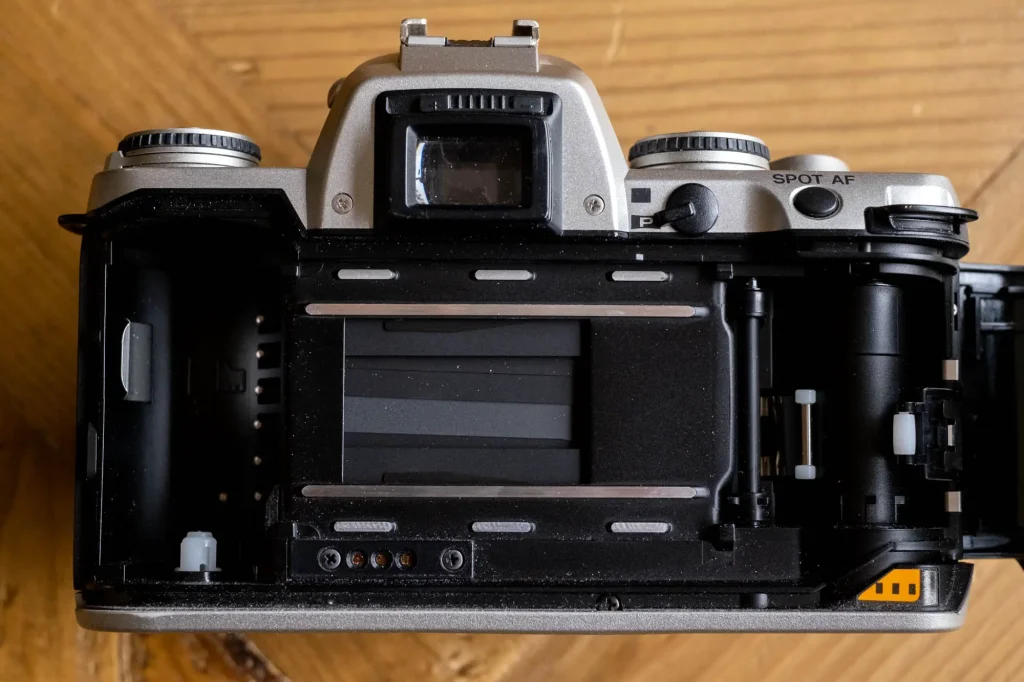
Other Pentax MZ-5 features
Which brings me back from my slight tangent into Pentax lens compatibility to the Pentax MZ-5 and the question of what other features it offers. Simply put, beyond the panorama switch, whilst the features aren’t extensive, they are fairly comprehensive in terms of the basics most photographers might need from an SLR.
For a start, the Pentax MZ-5 has both a control dial for setting exposure compensation by +/-3ev and a manual ISO override for setting the exposure index. It also has a switch for shooting single or continuous exposures (at a fairly slow rate) as well as a self timer. You can also set the meter between evaluative, centre weighted and spot.
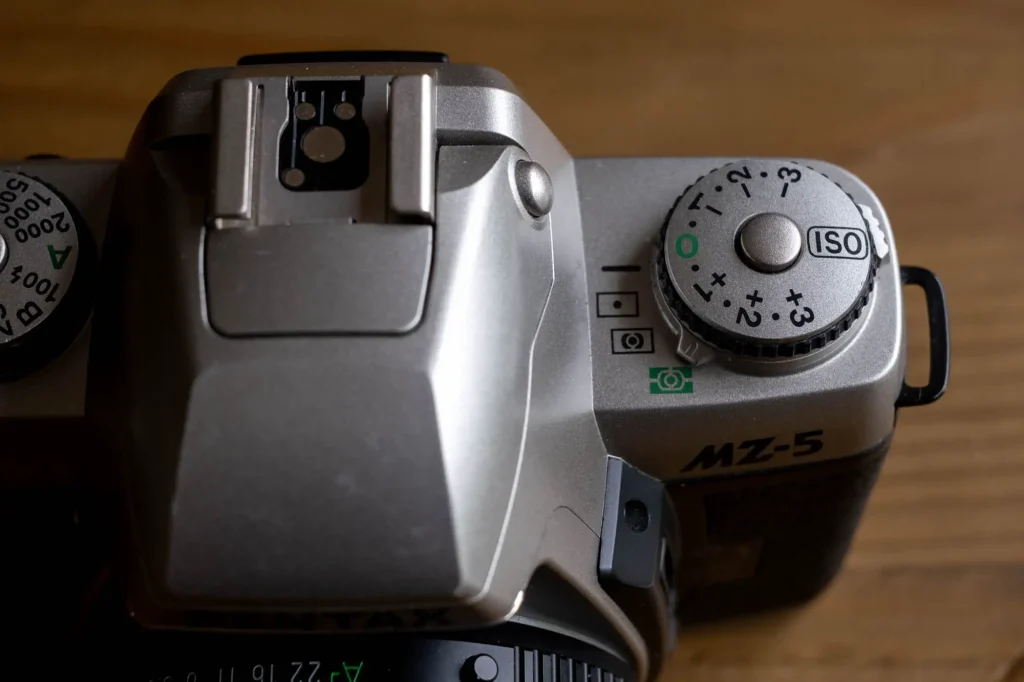
It also has a switch for setting the camera to manual focus.
What’s interesting about this is that I have read that if you’re really careful, you can swap the split screen focusing screen out of the MZ-M to make even more convenient use of older manual focus lenses with the Pentax MZ-5. Though apparently if you do that, the spot meter becomes unreliable. I haven’t tried to do this yet, though I might yet give it a go with my more recently purchased MZ-3 – a story for another day, perhaps…
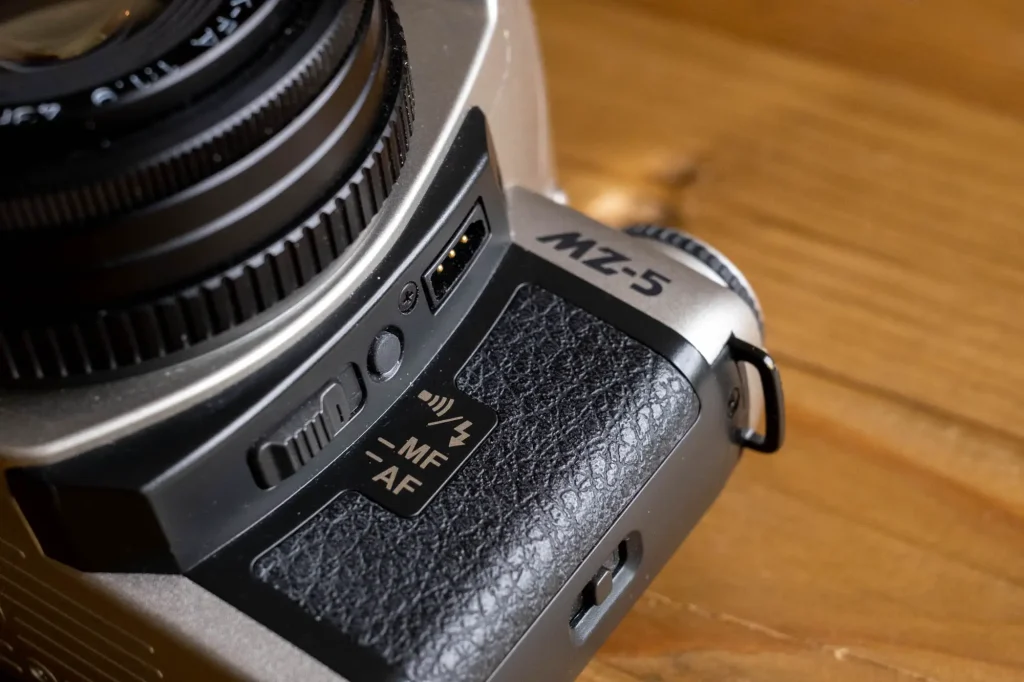
My main caveat
For all this though, there is one thing that lets these cameras down, and that’s a lack of a sense of what’s being focused on. When you look through the viewfinder, despite the camera having 3 focus points, there isn’t any indication as to which one the camera has selected when it has obtained focus. And in fact, only the centre one is properly marked inside the viewfinder.
There is a way to force it to select the centre spot, but that involves pressing the focus ‘SPOT AF’ button on the back of the camera which isn’t particularly comfortable to press, and the camera give zero feedback when the function is activated. In short, it’s quite easy to feel a little bit disconnected from the process of autofocusing.
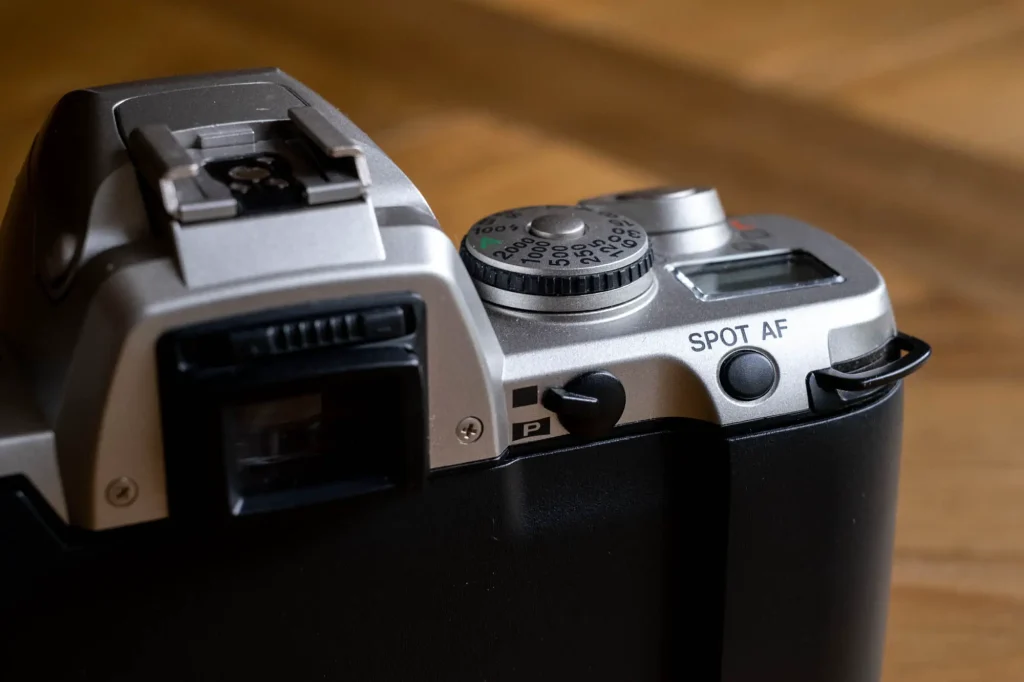
Some pictures
So for all this waffle, what about some pictures…? As I talked about in my previous post about my recent flurry of Pentax related purchasing, I haven’t actually spent that much time shooting this camera. Though, that’s not because I didn’t like it, instead it’s because I did like but decided I wanted to upgrade from it to the slightly-faster autofocusing MZ-3. For reasons only really known to my GAS, I then quite quickly upgraded again to the much higher specified MZ-S…
But anyway, that doesn’t mean I didn’t take any pictures with the Pentax MZ-5, I just didn’t take that many. Here are a select few. The colour ones were shot on Kodak E100 reversal film, which if nothing else says something of the AE system in the camera.
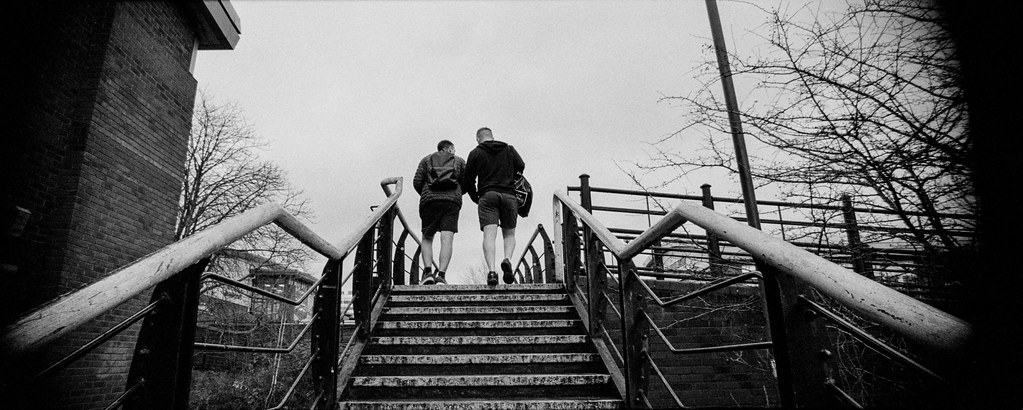
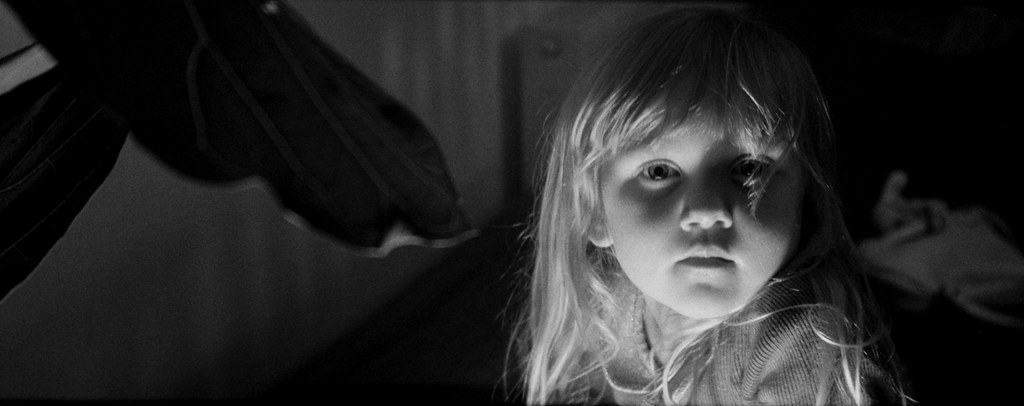

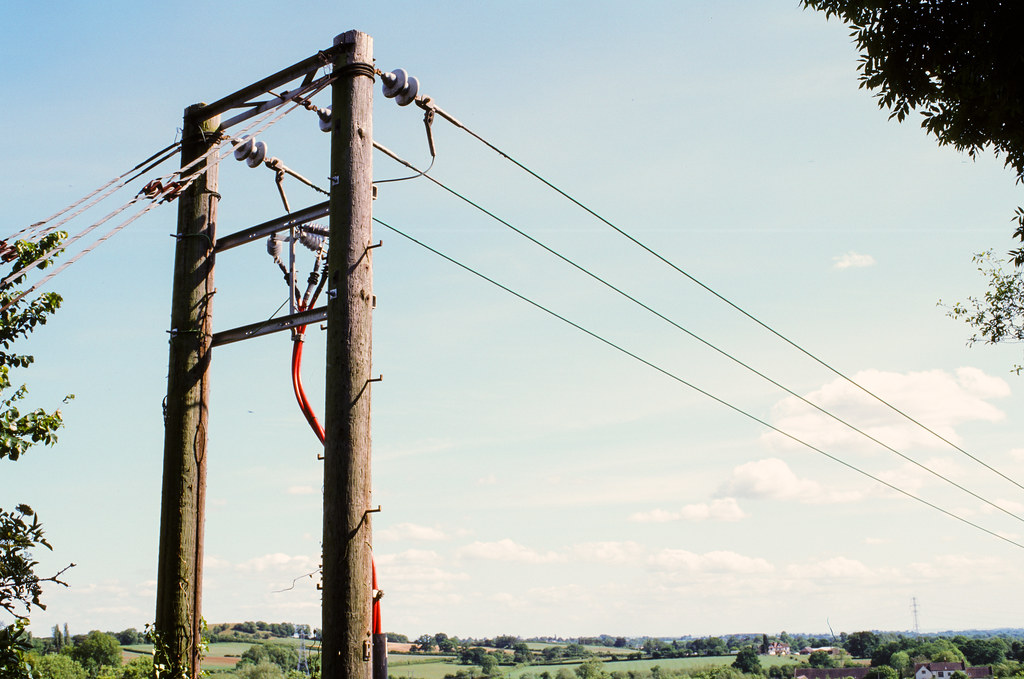
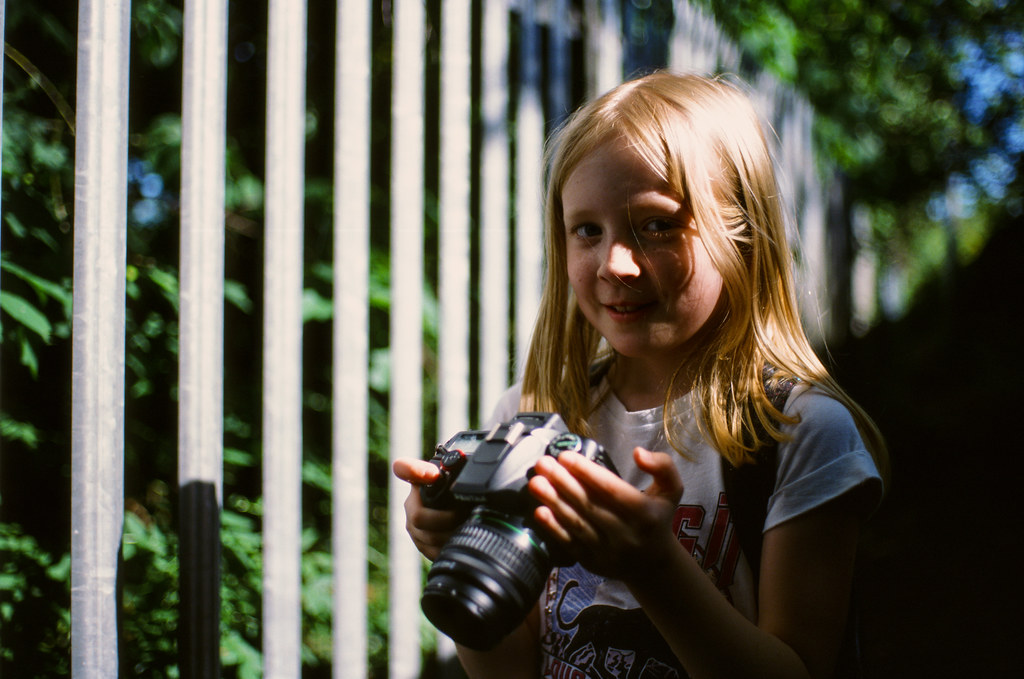
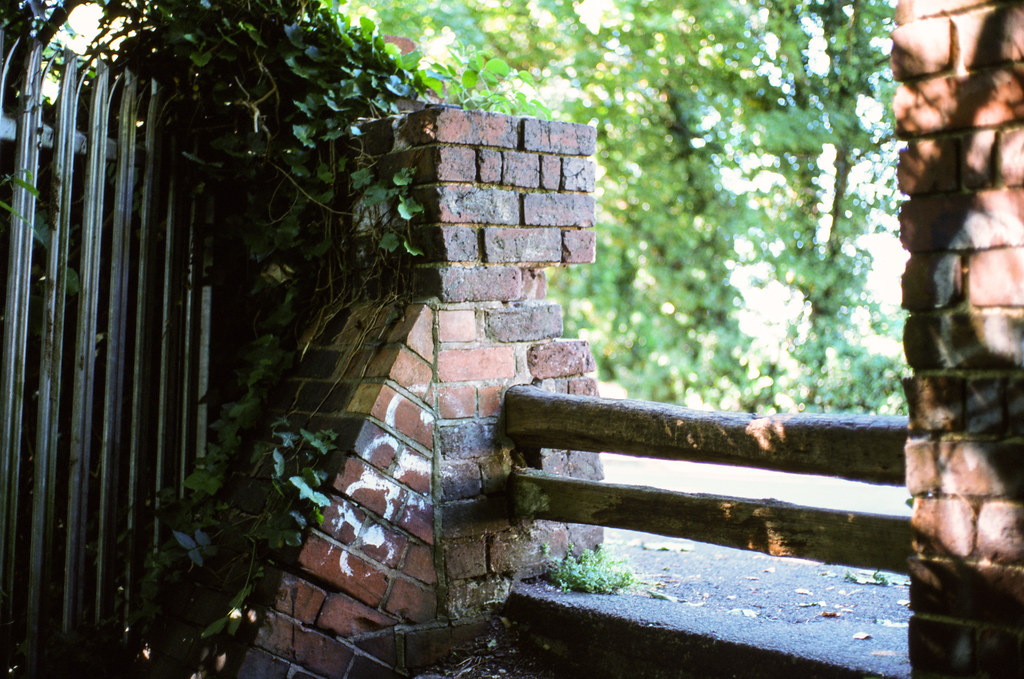
You can find more shots on flickr here
Final Thoughts on the Pentax MZ-5
At the beginning of this article, I talked of this camera as offering some cheap thrills, but I haven’t yet mentioned that it only cost me £10. £10! Now, of course, that was without a lens, and if you want a Pentax AF prime lens, you could probably add another £100 to that, at least. But, if you’re happy to settle on a zoom lens (2 of the like I recently sold for less than £10 each), or a manual focus lens, you could find yourself a very cheap setup that does quite a lot more than many of the point & shoot cameras that now cost a lot more money!
The catch? Well, it’s a bit bigger than a point & shoot for a start. Beyond that, I suppose it’s going to depend on your perspective. If you spend your life trawling depop looking for point & shoot cameras as the fashion items it seems they have become, I suspect the campaign-silver Pentax MZ-5 won’t fit the bill. Equally – and at the opposite end of the spectrum – if you want a workhorse of a machine that will take every drop on the floor or bash on the wall, I’d guess this lightweight plastic camera would disappoint you too.
But, if all you want from a camera is something low cost and that most of the basic controls a camera needs to function for all but the most challenging photographic situations, then the Pentax MZ-5 will probably do the trick nicely! You’ll never be cool shooting one though… well, not for now at least, who knows what the next trend will be. And maybe they are going up on price – my mate Alan only paid 99p for his
A quick note on my Pentax SLR Experiences
Some time last year I bought myself a Pentax MX. At the time, I decided I was going to commit to it for a little while – regular readers will know this already. Since then, my interest in Pentax cameras and lenses has expanded way beyond the MX. As I have already mentioned, I talked about this in an article about Pentax GAS a few weeks ago. This won’t be the last of my Pentax articles either, I’m certain of it. If they are of particular interest, I have now created another tag to help you keep track of of my various Pentax related waffle. Moving forward you will find it linked in the list of tags at the bottom of all my Pentax articles. Just click ‘Hamish’s Pentax SLR Experiences‘ below.
Share this post:
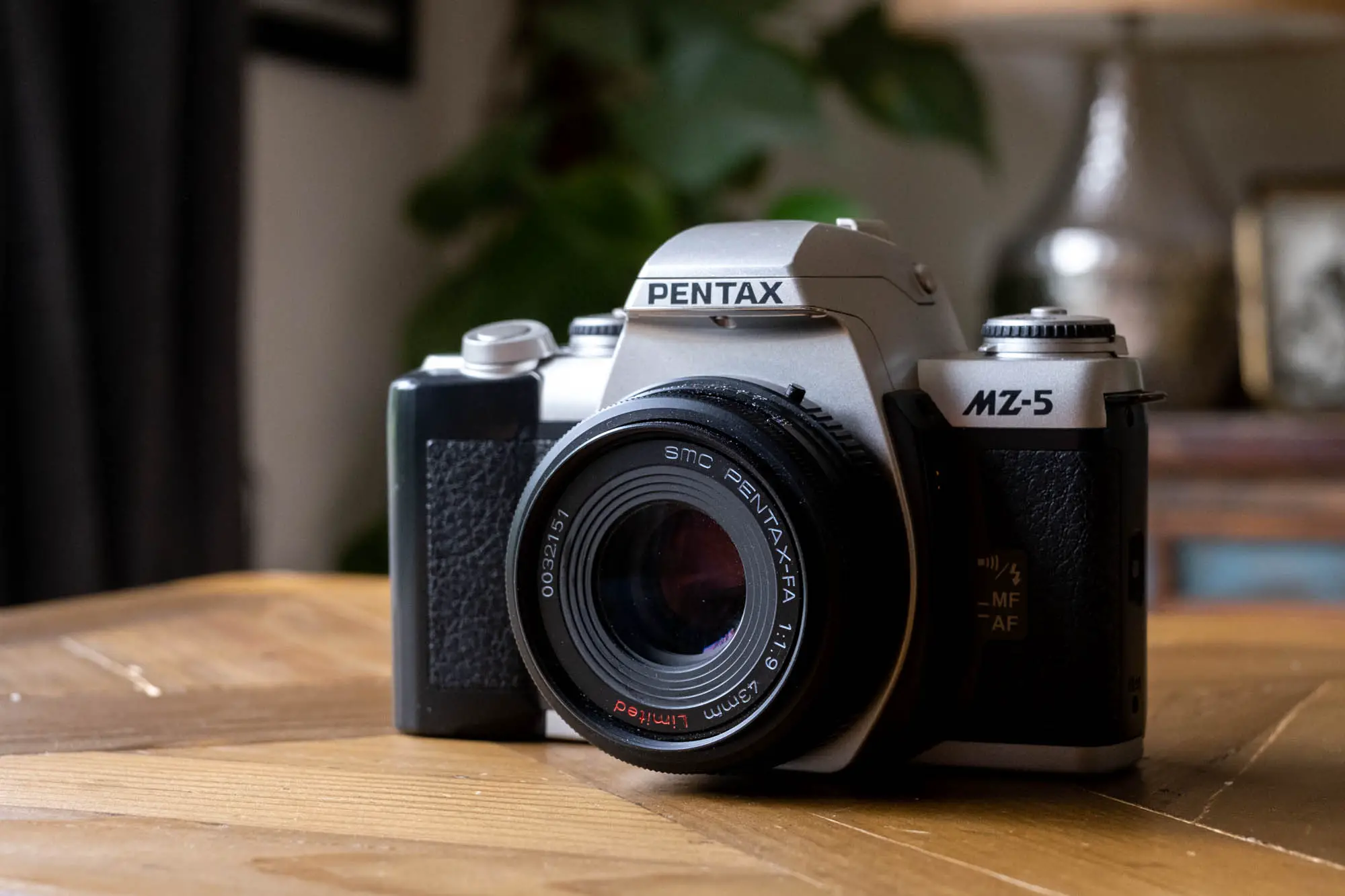


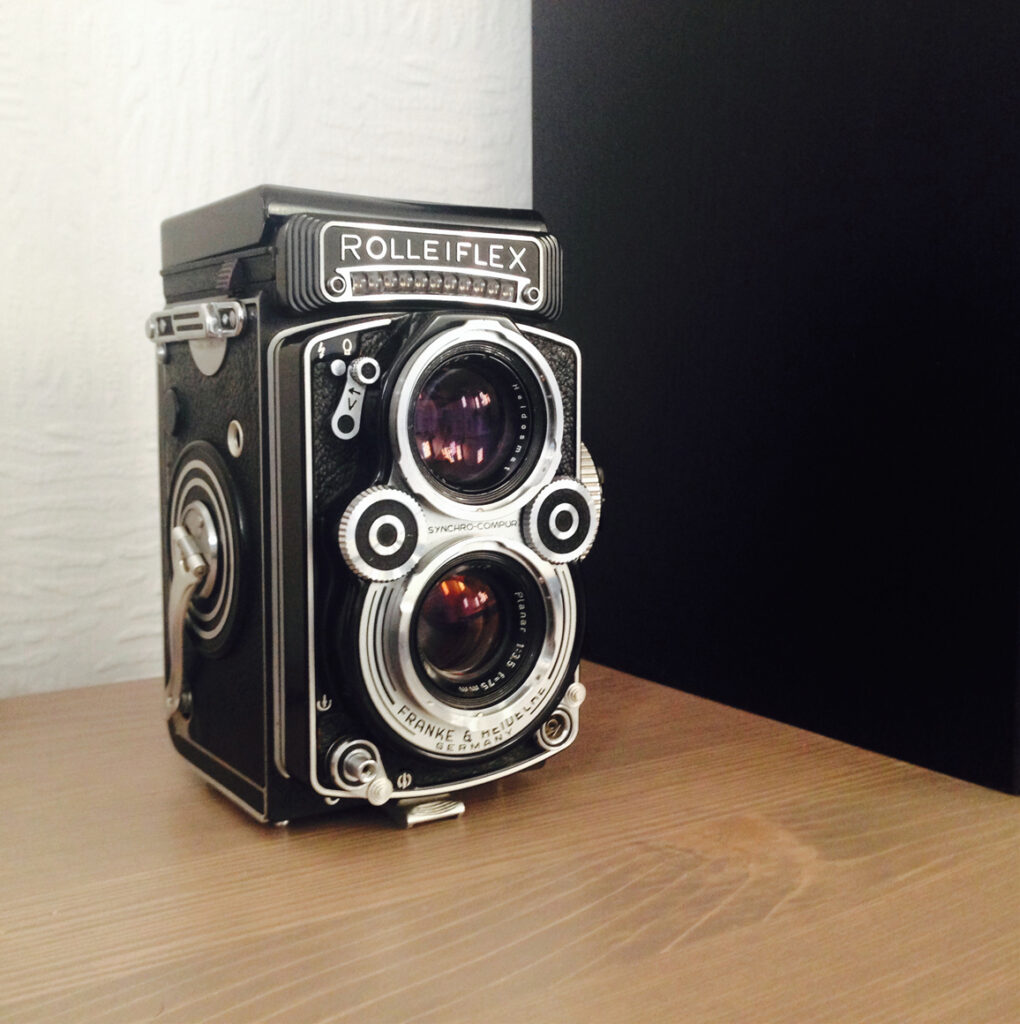
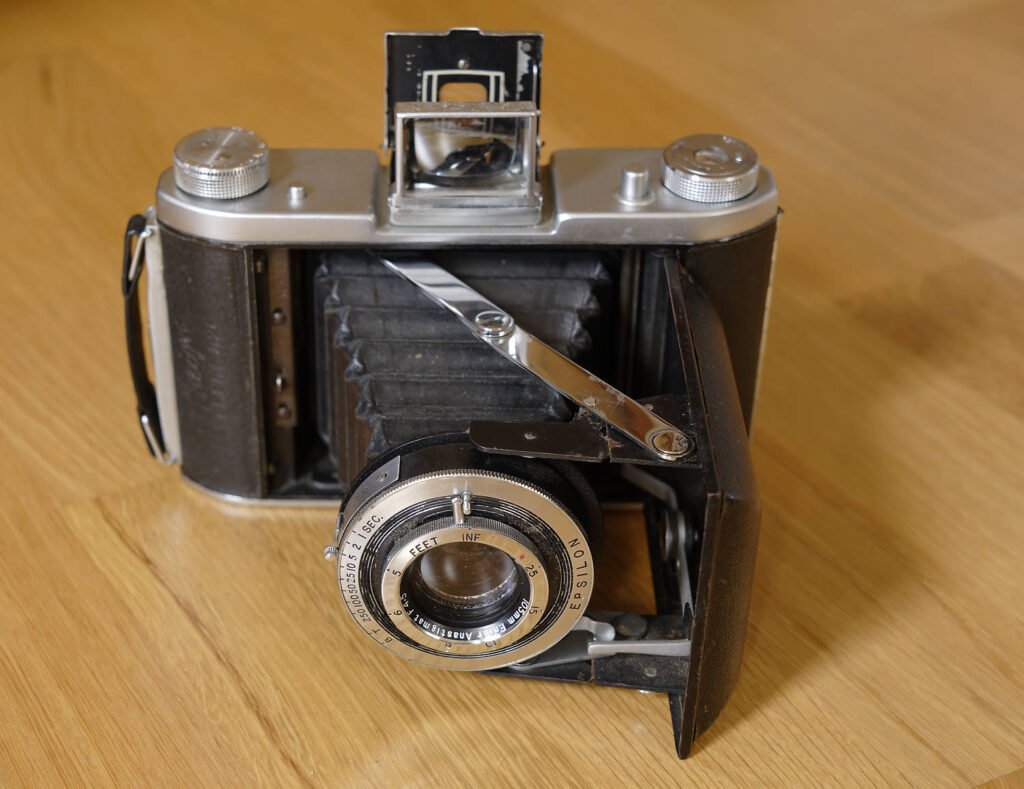




Comments
Graham Coad on Pentax MZ-5 Review – Cheap Thrills with an AF SLR Film Camera
Comment posted: 20/07/2020
Hamish, could you enlarge on that please? I have one which stopped working soon after I bought it, (seems it may be the stripped plastic cog issue that affects the MZ series)
I have been considering getting it serviced professionally but wonder what your experience was.
Graham.
Gorpalm on Pentax MZ-5 Review – Cheap Thrills with an AF SLR Film Camera
Comment posted: 20/07/2020
dezutter etienne on Pentax MZ-5 Review – Cheap Thrills with an AF SLR Film Camera
Comment posted: 20/07/2020
JONATHAN MACDONALD on Pentax MZ-5 Review – Cheap Thrills with an AF SLR Film Camera
Comment posted: 21/07/2020
For that reason alone I prefer the bigger, heavier, slower Pentax AF cameras such as the SFXn. They're a lot heavier, have only one AF point and AF is slower, but they're far more reliable and better built.
Richard Moore on Pentax MZ-5 Review – Cheap Thrills with an AF SLR Film Camera
Comment posted: 21/07/2020
This (and others like it) exist at a confluence of electronics, plastic and mass production which will not be economically repairable, lack the cool factor of older more mechanical cameras yet offer some great functionality at very cheap prices. Personally I'd rather use this than the cameras like the Super Program which followed the ME-Super.
Sroyon on Pentax MZ-5 Review – Cheap Thrills with an AF SLR Film Camera
Comment posted: 22/07/2020
Aivaras on Pentax MZ-5 Review – Cheap Thrills with an AF SLR Film Camera
Comment posted: 22/07/2020
Comment posted: 22/07/2020
Comment posted: 22/07/2020
Comment posted: 22/07/2020
Connie on Pentax MZ-5 Review – Cheap Thrills with an AF SLR Film Camera
Comment posted: 07/08/2020
Comment posted: 07/08/2020
Barry Reid on Pentax MZ-5 Review – Cheap Thrills with an AF SLR Film Camera
Comment posted: 11/08/2020